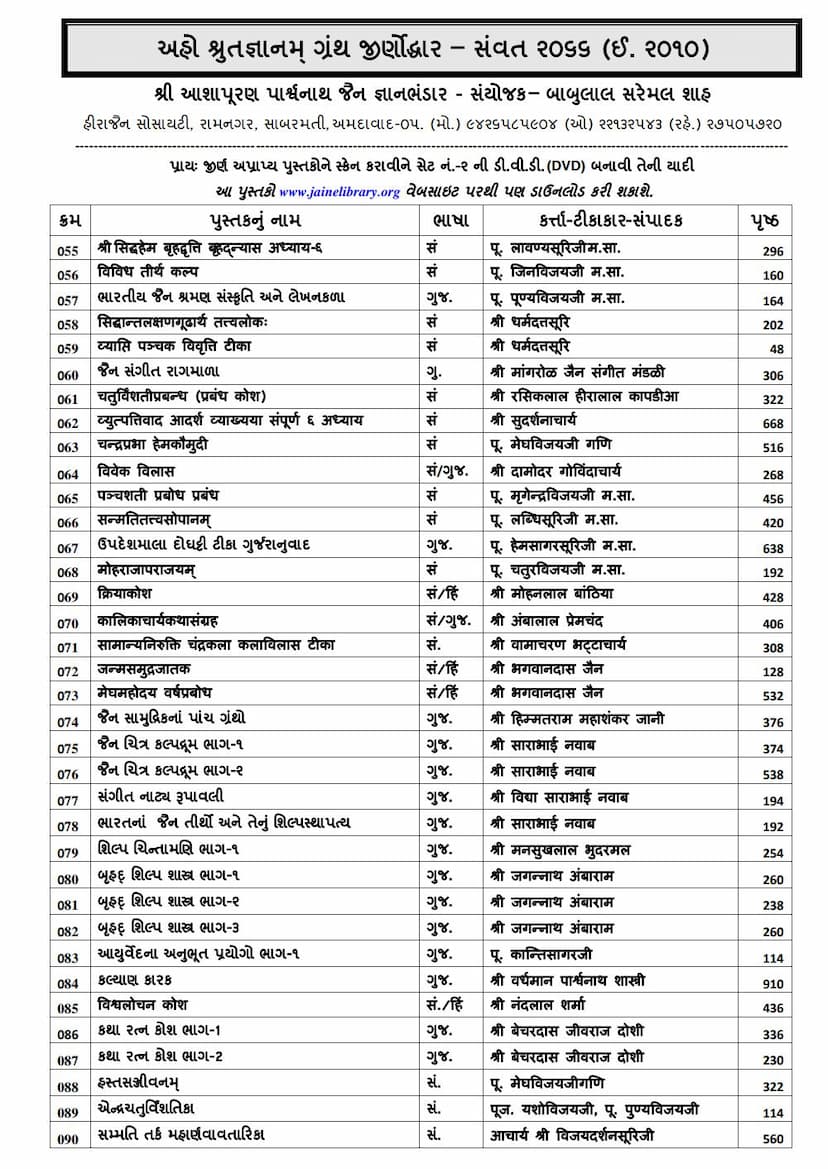Kalikacharya Kathasangraha
Added to library: September 2, 2025

Summary
This is a comprehensive summary of the Jain text "Kalikacharya Kathasangraha," authored by Ambalal P Shah and published by Kunvarji Hirji Naliya, based on the provided catalog link and scanned pages.
Book Title: Kalikacharya Kathasangraha (कालिकार्य कथासंग्रह) Author: Ambalal P Shah (अम्बालाल प्रेमचंद शाह) Publisher: Kunvarji Hirji Naliya (कुंवरजी हीरजी छेडा : नलिया (कच्छ)) Series: Shri Jain Kala-Sahitya Sanshodhak Karyalaya Series No. 3
Overall Summary:
The "Kalikacharya Kathasangraha" is a significant Jain text compiled by Pandit Ambalal Premchand Shah. It presents a collection of various "Kalaka's stories" (कालिकाचार् कथा) authored by Jain Acharyas from the 7th to the 17th century in Prakrit, Sanskrit, and Old Gujarati languages. The book not only provides the original texts and historical context of these stories but also includes a significant collection of artistic representations found in manuscripts from the 13th to the 17th century, showcasing Gujarat's art supported by royal patronage. The compilation features 19 color and 69 black-and-white illustrations.
Key Aspects and Contents:
-
Scope and Content: The book compiles thirty-six different "Kalaka stories," attributed to approximately the same number of Jain monks and scholars. Some authors remain anonymous. The text aims to preserve and present these stories, which highlight the life, teachings, and significant events associated with Acharya Kalaka and other prominent figures.
-
Historical and Cultural Significance: The introduction emphasizes the rich heritage of Jain culture and its contribution to art and literature. The stories of Kalaka are presented as a reflection of this heritage, showcasing their influence on popular imagination and artistic traditions. The inclusion of illustrations from various manuscripts underscores the visual dimension of Jain storytelling and manuscript illumination.
-
Structure and Compilation: The book is organized with an introduction (Upo(d)ghat), the main text containing the stories, references, a list of authors, and a detailed description of the illustrations. The compiler, Ambalal P. Shah, meticulously gathered and organized material from various Jain Bhandars (libraries) and personal collections. He expresses gratitude to numerous individuals and institutions that facilitated access to manuscripts.
-
Key Figures and Narratives: The text delves into the lives and works of various Jain Acharyas who contributed to the Kalaka narratives. It discusses the significance of Acharya Kalaka's revolutionary actions and the impact they had on the Jain tradition. The compilation also highlights the historical context, the evolution of storytelling, and the artistic styles prevalent during different periods.
-
Artistic Representation: A substantial portion of the book is dedicated to the visual aspect, with detailed descriptions of 19 color and 69 monochrome illustrations. These are sourced from various manuscripts (palm-leaf and paper) dating from the 13th to the 17th century. The illustrations are analyzed for their artistic merit, subject matter, and historical significance, offering insights into Jain painting and craftsmanship. Specific plates and figures are described, including depictions of Acharya Kalaka, other monks and nuns, Jain lay followers, deities like Parshvanath, and mythological scenes.
-
Linguistic and Scholarly Approach: The compiler, Pandit Ambalal Premchand Shah, demonstrates a deep understanding of Jain literature, grammar, and art history. He refers to various original sources, commentaries (Chūrṇis, Bhāṣyas), and scholarly analyses, including the work of W. Norman Brown. The text also engages with historical debates, such as the identity of Vikramaditya and the origins of the Vikram Samvat, drawing upon Jain traditions.
-
Notable Stories and Themes:
- Acharya Kalaka's Bravery and Actions: The stories often revolve around Acharya Kalaka's determination, his confrontation with powerful rulers like King Gardabhilla (Gabdabhil), his supernatural abilities (like the use of the Gardabhī Vidya), and his efforts to protect the Jain faith and its followers.
- Protection of a Nun (Saraswati): A prominent narrative involves the abduction of the nun Saraswati by King Gardabhilla and Acharya Kalaka's subsequent intervention to rescue her.
- The Controversy of Paryushana Dates: The text discusses the historical shift in the observance of Paryushana from the fifth day to the fourth day, attributed to Acharya Kalaka's intervention to accommodate King Shalivahana's Indra festival.
- Interplay with Royal Patronage and Political Events: The stories often integrate historical figures like Vikramaditya and political contexts, suggesting the significant role Jain Acharyas played in societal and political affairs.
- Artistic Illustrations: The detailed descriptions of the illustrations provide context for the narratives, explaining the iconography, artistic techniques, and the historical period represented by the paintings.
-
Scholarly Contribution: The book is a product of extensive research, acknowledging the contributions of various scholars and the importance of preserving rare manuscripts. Ambalal Shah's effort in scanning old and rare books and making them accessible through DVDs is also mentioned, highlighting a commitment to the dissemination of Jain knowledge.
In essence, the "Kalikacharya Kathasangraha" is a scholarly and visually rich compilation that serves as a vital resource for understanding the historical narratives, cultural practices, artistic expressions, and influential figures within the Jain tradition, particularly focusing on the legendary Acharya Kalaka. The book not only narrates stories but also provides critical analysis, textual references, and invaluable visual documentation.